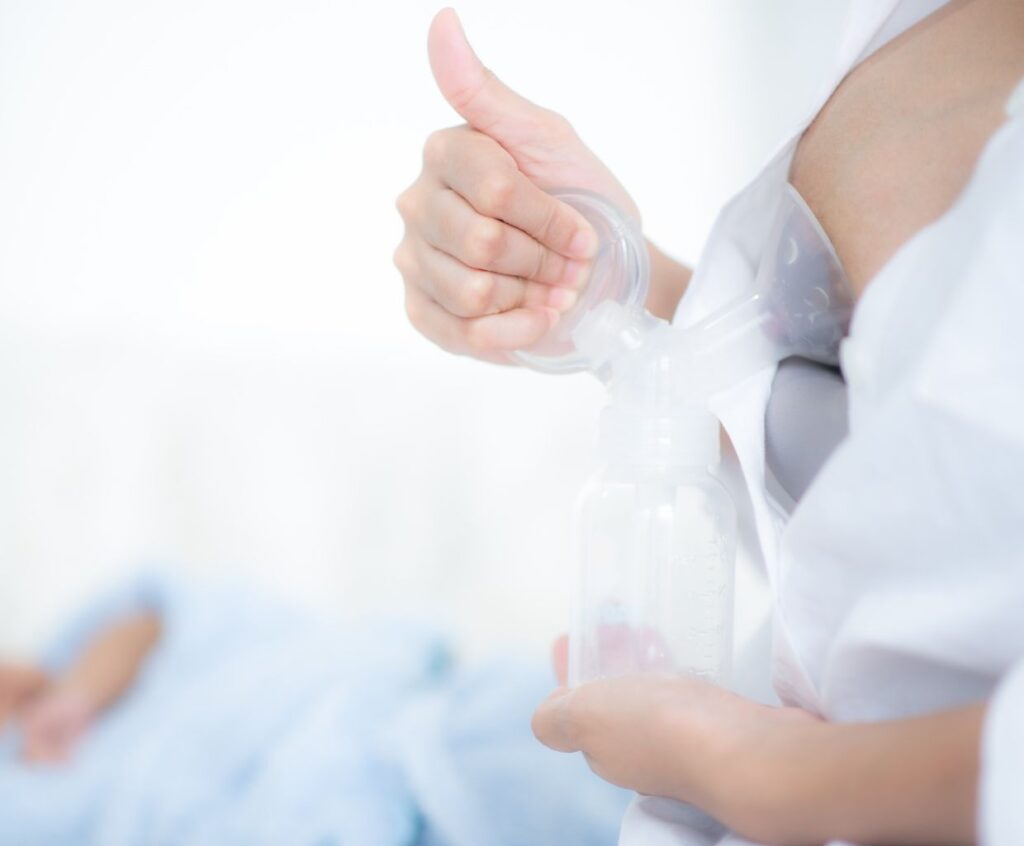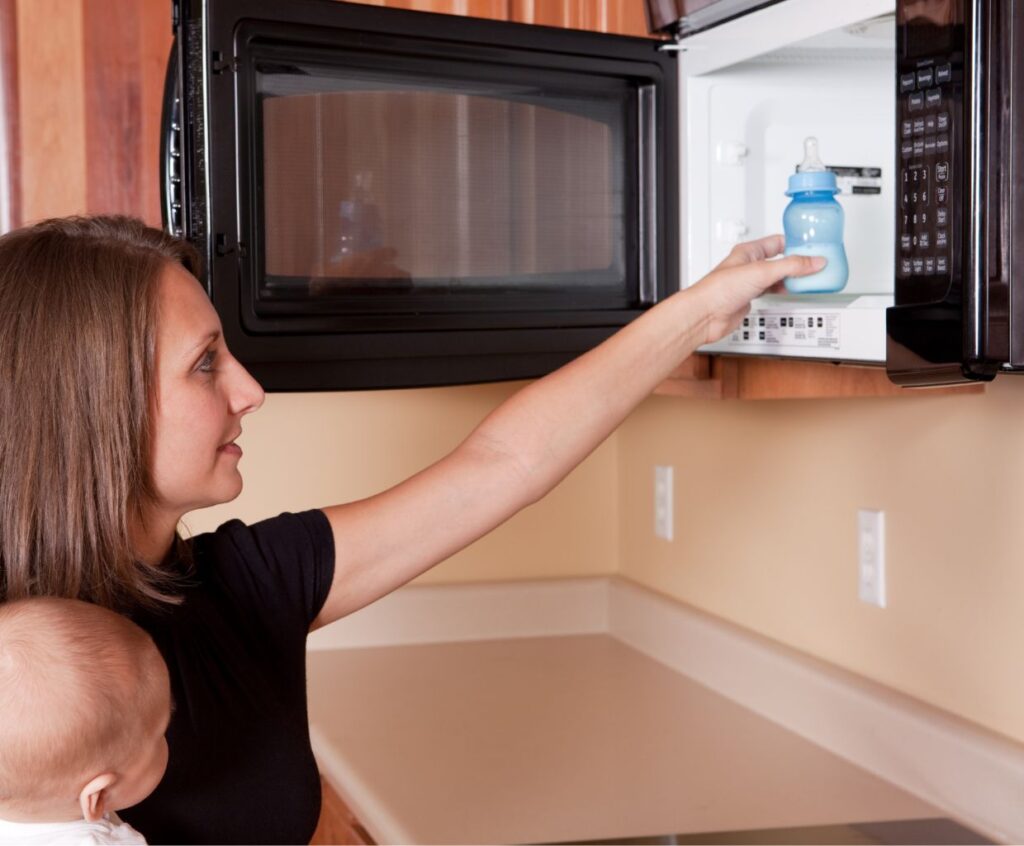Breast Milk Reheating Guide: How Many Times Can You Reheat Breast Milk?
Breast milk is considered the gold standard when it comes to feeding your baby. It provides all the necessary nutrients and antibodies to support your little one’s growth and development.
However, there may be instances when you need to warm up stored breast milk. But how often can you reheat breast milk without compromising its quality and safety?
Let’s find out!

Factors to Consider
Before reheating breast milk, it’s essential to consider a few factors:
1. Temperature
When reheating breast milk, it’s crucial to avoid overheating. Excessive heat can destroy essential nutrients and enzymes present in the milk. It’s recommended to use warm water or a bottle warmer instead of a microwave to ensure gentle and even warming.
2. Storage Time
Each time breast milk is reheated, it can be exposed to bacteria that may have accumulated during storage. To minimize the risk of bacterial growth, it’s advisable to use freshly pumped breast milk whenever possible. Check the storage guidelines provided by your healthcare provider or a reputable source if using stored milk.
3. Baby’s Acceptance
Some babies may refuse to drink reheated breast milk due to changes in taste or smell. It’s always best to observe your baby’s reaction and offer fresh milk if necessary.
Reheating Breast Milk Guidelines
While there is no definitive answer to how many times breast milk can be reheated, here are some general guidelines:
-
- Try to use freshly pumped breast milk whenever possible.
-
- If using stored milk, only thaw the amount you expect your baby to consume in one feeding.
-
- Discard any leftover milk in the bottle after a feeding to avoid contamination.
-
- Never refreeze breast milk that has been previously thawed.
-
- Reheat the milk by placing the container in warm water or using a bottle warmer. Avoid using a microwave as it can create hot spots in the milk.
-
- Test the temperature of the milk on the inside of your wrist before feeding it to your baby. It should be lukewarm, not hot.
-
- Only reheat breast milk once. If your baby doesn’t consume the entire amount, discard the remaining milk.
Is it safe to reheat breast milk multiple times?
It is generally recommended not to reheat breast milk multiple times. Reheating breast milk too often can lead to losing essential nutrients and potentially cause bacteria growth. It is best to thaw only the amount of breast milk needed for a feeding and discard any remaining milk after that feeding.
If you need to warm the milk, use a warm water bath or a bottle warmer, and make sure to use it within 2 hours after it has been thawed or warmed.
How does reheating breast milk affect its nutritional value?
Reheating breast milk can affect its nutritional value to some extent. Here are a few points to consider:
1. Loss of nutrients: Breast milk contains various nutrients, enzymes, and immune factors. When breast milk is reheated, especially at high temperatures, some of these components may be destroyed or denatured, resulting in a loss of nutritional value.
2. Uneven heating: Improper reheating techniques or uneven heating can cause hot spots in the milk, destroying some beneficial components. It is essential to ensure thorough and even heating to minimize nutrient loss.
3. Lipase activity: Breast milk contains an enzyme called lipase, which helps break down fats. When breast milk is refrigerated or frozen, lipase breaks down fats, leading to a soapy or rancid taste. Reheating can further increase the breakdown of fats, affecting the taste and smell of the milk.
4. Antibodies and immune factors: Breast milk contains antibodies and immune factors that help protect the baby against infections and boost their immunity. Although reheating breast milk may reduce some of these components, the overall impact on immune protection is still considered beneficial.
To minimize the loss of nutritional value when reheating breast milk, it is recommended to follow these guidelines:
- Use gentle reheating methods: Avoid overheating breast milk using gentle reheating techniques like placing the container in warm water or using a bottle warmer. Avoid using a microwave as it may heat the milk unevenly and destroy some nutrients.
- Stir or swirl gently: Before feeding, gently stir or swirl the milk to evenly distribute any heat and minimize hot spots.
- Use within 24 hours: If breast milk has been refrigerated or frozen, it should be consumed within 24 hours of being reheated. Discard any leftover milk after a feeding session to avoid bacterial contamination.
It’s important to note that while reheating breast milk may cause some loss of nutritional value, it remains a valuable source of nutrition for infants.
Can reheating breast milk too many times lead to the growth of harmful bacteria?
Yes, reheating breast milk multiple times can increase the risk of bacterial growth. Breast milk contains various nutrients that can promote bacteria growth when exposed to heat multiple times.
It is recommended to heat breast milk only once and discard any remaining milk after a feeding to minimize the risk of bacterial contamination.
What are the potential risks of reheating breast milk repeatedly?
Reheating breast milk repeatedly can potentially lead to several risks:
1. Nutrient loss: Repeatedly heating breast milk can cause a loss of essential nutrients, such as vitamins and proteins, for the baby’s growth and development.
2. Overheating: If breast milk is reheated too many times, there is a risk of overheating it, which can destroy the beneficial enzymes and antibodies present in the milk.
3. Bacterial growth: When breast milk is reheated, bacteria multiply. The more times it is reheated, the higher the risk of bacterial contamination, which can lead to gastrointestinal infections or other illnesses in the baby.
4. Lipase breakdown: Breast milk contains lipase, which helps break down fats. Reheating breast milk multiple times can cause lipase breakdown, resulting in a rancid taste and smell that the baby may reject.
5. Wasting breast milk: Reheating breast milk repeatedly increases the chances of the milk going to waste. If the baby does not consume all the reheated milk, it cannot be refrigerated or frozen again, leading to potential waste.
To minimize these risks, only heat the necessary amount of breast milk and discard any unused portion after a feeding session. Additionally, using a bottle warmer or warm water bath instead of a microwave can help ensure even heating, reducing the risk of overheating.
Conclusion
Breast milk should be reheated with caution to preserve its nutritional value and ensure your baby’s safety. While it’s best to use freshly pumped milk whenever possible, following proper storage and reheating guidelines can help provide your little one with safe and nourishing breast milk.

